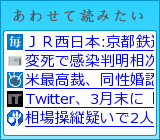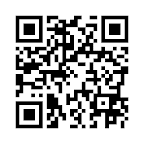デルファイ法
これで何のことか解る人は以下は読む必要はないだろう.
元々は予測が難しい未来のことを予測するための方法
最近はそれを転じて合意形成の方法としても用いられることが多く,また質的研究者にとっては一つの方法として習熟しておくべき方法である.
デルファイはギリシャのアポロン神殿がありそこで様々な神託が得られる場所であるが,それとは直接は関係なく,以下のリンクにあるように,
@IT総合トップ > 情報マネジメント > 情報マネジメント用語事典 > デルファイ法
デルファイ法 delphi method / delphi technique
デルファイ法は1950年代に米国のシンクタンクであるランド・コーポレーションで開発されたものである。もともとは、米空軍が専門家の意見を応用して「ソ連の戦略立案者の立場から、米国産業を目標にしたときに必要になる原子爆弾の数の推定する」研究である“Project Delphi”をランドに依頼したことに始まる。デルファイとは、神託で有名なアポロン神殿のあった古代ギリシャの地名である。
オリジナルの出典は
Dalkey N, Brown B, Cochran S. The Delphi Method, III: Use of Self Ratings to Improve Group Estimates. Santa Monica, Calif: Rand Corp; November 1969. Publication RM-6115-PR.
ちゃんとRand Corp.の名前がはいっています.
必要な原爆数を推定するプロジェクトを神託に関連するデルファイの地にちなんで“Project Delphi”と名付けるあたりが,どうよ.なのだが,方法論としての記述は上記に詳しい.(非常に詳しいので一読を)
専門家グループなどが持つ直観的意見や経験的判断を反復型アンケートを使って、組織的に集約・洗練する意見収束技法。技術革新や社会変動などに関する未来予測を行う定性調査によく用いられる。
デルファイ法ではまず、予測したいテーマについて詳しい専門家や有識者を選んで意見を求める。得られた回答は統計的に集約して意見を取りまとめ、これを添えて同じ質問を各専門家に対して行い、意見の再検討を求める。この質問とフィードバック、意見の再考という過程を数回、繰り返すとグループの意見が一定の範囲に収束してくる。この意見集約によって、確度の高い予測を得ようというわけである。
一般に、専門家同士の意見の集約・合意を得る方法として、会議や審議会、パネルディスカッションといった意見交換法が用いられるが、これらの方法は「グループにおける優位者や権威者、声の大きな者の影響」「テーマと無関係な意見、反対のための反対」「意見の統一に対する圧力」などによる偏りが考えられる。
デルファイ法は「匿名の回答」「反復とコントロールされたフィードバック」「統計的なグループ回答」という特徴を持ち、師弟関係や友人関係といったテーマと関係のない影響力を極力排除するよう配慮される。
ある意味多数決の方法とよく似ており,現在の不特定大多数の意見が真実に近くなる(大統領選の勝者も,フットボール決勝戦の勝者も正確に予測できた)というウェブ進化論の指摘する「民意」のことなのだと思う.
デルファイ法は広い分野で受け入れられたこともあって、初期のころからその妥当性に関する議論が活発に行われてきた。デルファイ法の問題としては「専門家の定義や選出方法」「アンケート質問の適正さ」「意見一致への強要や誘導」「集約手法の信頼性や妥当性」「未来予測の限界」などが指摘される。デルファイ調査を実施する際には、手法に内在する限界を十分に理解したうえで、適切に行うことが必要である。
はてなダイアリー > キーワード > デルファイ法
医学分野ではmodified Delphi(デルファイの変法)が用いられることが多いが,何がmodifiedなのかはまだ勉強不足.
もう一つ説明のリンクを.
■ デルファイ法
実際の使用例はもともとの将来の技術予測では,
[技術予測調査] ( 2001.7 文部科学省 発表)pdf
[連載]日本の科学技術の現状と今後の予測 デルファイ調査‐概要
先日の家庭医療学会でも私が座長をさせていただいた口演の一つで使用されていた.
L-08 寺田 豊 デルファイ法を用いた地域健康ニーズの把握
この発表では,ニーズの把握の妥当な方法としてのデルファイ法,というよりも特に地方ではまだまだ医者に向かって色々意見が言えないので,その敷居を取り払うことと,住民がみんなで意見を集約した,という当事者意識を高めるための(その結果そこで策定された計画には積極的な参加が得られる)「エンパワーメントツール」としてのデルファイ法という扱いをしていた.
以前のエントリーでデルファイ法を用いた論文を2件レビューしたが,
家庭医療の特徴や定義についての研究2編
家庭医とはどの様な仕事か,家庭医療の将来はどうなっているべきかなどの,意見集約方法として比較的使いやすいと考えられる.
最後に,医学研究で使われる例といて,具体的にmethod sectionをレビューするのが最もわかりやすいと思われるので,最近読んだ
Donna M. Fick, PhD, RN.et al. Updating the Beers Criteria for Potentially Inappropriate Medication Use in Older Adults. Results of a US Consensus Panel of Experts. Arch Intern Med. 2003;163:2716-2724. (Vol. 163 No. 22, December 8, 2003)
のmethod sectionを読んでみよう.
RESEARCH DESIGN
The modified Delphi method is a technique to arrive at a group consensus regarding an issue under investigation that was originally developed at the RAND Corporation (Santa Monica, Calif) by Olaf Helmer and Norman Dalkey.25 The Delphi method is a set of procedures and methods for formulating a group judgment for a subject matter in which precise information is lacking (such as medication use in older adults). The Delphi method provides a means to reach consensus within a group of experts. The method relies on soliciting individual (often anonymous) answers to written questions by survey or other type of communication. A series of iterations provides each individual with feedback on the responses of the others in the group. The final responses are evaluated for variance and means to determine which questions the group has reached consensus about, either affirmatively or negatively.
modified Delphiについての説明.何がmodifiedかは相変わらず不明.正確な情報が不足している領域においてグループで何らかの決定を下すための手順と方法論と.
順序としては
1.デルファイ法の最初の1巡に使うための調査票の作成
2.デルファイ法に参加する専門家集団の選定
3.デルファイ法の実施
と,実施までに準備が必要.
1を3段階に分割
phase 1 1994年から2000年までの地域に住むか入居の(入院でない)高齢者での投薬に関する論文(副作用,使用問題などのキーワードと絡めて)を抽出
phase 2 それらで見つかった論文の参考文献を全て手作業で当たり,更に関連論文を抽出し,それらを加えて論文のリストとする.
phase 3 次のステップで選ばれる専門科集団にデルファイ法の1巡目の後にそのリストを見せ,追加すべき論文がないかたずね,あれば加える.
そのあと,研究者2名が独立して,その論文の
研究デザイン,対象となった薬剤,結果のサマリーと主要ポイント,対象となった薬剤の種類,分類,副作用の重症度
についてまとめる.
注:この論文リストの作成方法はsystematic review, meta-analysis, cost-effectiveness studyなどの2次研究の元論文の収集方法として典型的である.ただし,より厳密に,論文検索の包括性(comprehensiveness of literature search)を保証するには,大学院の修士,博士論文,現在進行中の研究,製薬会社の持つ未発表のデータ,終了したが論文になっていないデータ,学会発表(抄録)のみで,論文になっていないもの,についても検索をかけることが必要.
LITERATURE REVIEW
The selection of articles for formulating the survey involved 3 steps and was phase 1 of the study. First, we identified literature published since January 1994 in English, describing or analyzing medication use in community-living (ambulatory) older adults and older adults living in nursing homes. From that, we created a table and bibliography. We used MEDLINE, searching with the following key terms adverse drug reactions, adverse drug events, medication problems, and medications and elderly for all relevant articles published between January 1994 and December 2000. Second, we hand searched and identified additional references from the bibliographies of relevant articles. Third, all the panelists were invited to add references and articles after the first survey to add to the literature review. Each study was systematically reviewed by 2 investigators using a table to outline the following information: type of study design; sample size; medications reviewed; summary of results and key points; quality, type and category of medication addressed; and severity of the drug-related problem.
EXPERT PANEL SELECTION
The panel of members were invited to participate via letter by the 4 investigators and a consultant and represented a variety of experience and judgment including extensive clinical practice, extensive publications in this area, and/or senior academic rank. They were also chosen to represent acute, long-term, and community practice settings with pharmacological, geriatric medicine, and psychiatric expertise. Lastly, they were selected from geographically diverse parts of the United States. We initially invited (via regular mail) 16 potential participants with nationally and/or internationally recognized expertise in psychopharmacology, pharmacoepidemiology, clinical geriatric pharmacology, and clinical geriatric medicine to complete our survey. Our response rate for the initial invitation to participate as a panelist was 75% (12/16). Our final panel thus consisted of 12 experts who completed all rounds of the survey.
2.専門家集団の選定
4人の研究者と,彼らに相談を受けたコンサルタントにより臨床経験が豊富で,この領域での論文が多いか,大学で高いランク(教授など)にある人達を代表するようにメンバーが同定され,手紙により参加の招待をする.また,メンバーは,急性期,慢性期,地域,のそれぞれの臨床現場,また薬理学,老年医学,精神医学の専門分野を代表するように留意された.最終的には米国の様々な地域をまんべんなく代表するようにも留意した.最終的に16名に招待状が送られ,75%の12名がパネルメンバーとなり,デルファイ法の全ての過程に参加した.
注:この対象抽出法は質的研究によく見られる方法で,量的研究で良く用いられる,random samplingに対し,意図的サンプリング,クラスターサンプリングなどと呼ばれる.
3.デルファイ法の実施
先ず第1巡目のためのたたき台の作成.
4つのセクションに分けた
セクション1,2は1997年の基準のレビュー(今回の研究は1997年のcriteriaのupdateが目的なので)
セクション3,4は今回のupdateに加える必要があるかもしれない薬剤及び,薬剤と疾患の組み合わせのリスト.29この候補が加えられた.
最後のセクションに,セクション1-4以外で加えるべき薬剤がないか意見を求めた.
1巡目実施.
DATA COLLECTION AND ANALYSIS
We used the systematic review of the literature to construct the first round questionnaire. The first-round survey contained 4 sections. Parts 1 and 2 reviewed the latest 1997 criteria. Parts 3 and 4 were medications added for the 2002 update for medications alone (part 3) and medications considering diagnoses and conditions. Parts 3 and 4 included 29 new questions about medications or medication classes and conditions. The last question in part 4 asked panel members to add medications to the list. The panel was then surveyed via Delphi technique to determine concordance/consensus with the round 1 survey and invited to add additional medications prior to and during the second-round meeting.
専門科パネルの意見により,薬剤にその重症度の程度を加えることになった
We created the second and third questionnaires (severity ratings) from panel input and the results of the previous round survey. We completed all mailed and face-to-face rounds between October 2001 and February 2002. We constructed the questionnaire statements according to the original Beers criteria published in 1991 and the updated criteria published in 1997. The instructions accompanying the survey asked the respondents to consider the use of medications only in adults 65 years and older. The second-round survey included the statements included from round 1 and any statements added by the experts from the first round. In the second round and the face-to-face meeting, the respondents were given information about their answers and the anonymous answers of the other members of the group and were given the opportunity to reconsider their previous response.
ここは推測:
それぞれの薬剤に最も重要を1とし,どちらとも言えないを3,最も重要ではないを5とした評価をつけてもらい,その薬剤毎の平均評価の95%信頼区間が3を含むものと,3を含まずそれよりも小さいものを2巡目のリストに加えた.
(この棄却の基準がオリジナルと違うのでmodifiedといわれるのではないか.あとはface-to-face meetingが実施されたところがmodifiedだろう)
After analyzing the responses from the first round of the survey, we examined each question for inclusion or exclusion in the revised criteria or for further consideration in the second round of the survey. We calculated the mean rating and corresponding 95% confidence interval (CI) of each statement or dosing question collected from the first round of the survey. Those statements whose upper limit of the 95% CI was less than 3.0 were included in the updated criteria. Those statements or dosing questions whose lower limit of the 95% CI was greater than 3.0 were excluded from the updated criteria. Statements whose 95% CI included the value of 3.0 were included for further determination in the second-round face-to-face meeting.
The face-to-face meeting was convened on December 10, 2001, in Atlanta, Ga. Each panel member was given the results of the first-round survey and the added medications (from the other panel members) to review approximately 10 days before the meeting. For statements that needed further examination (neither included or excluded during round 1), each rater was given his or her previous rating and the mean rating of the group of experts in the second survey.
Any additional statements or dosing questions that had been made on the open-ended portion of the first round of the survey by any expert was included in the survey for the second round. Forty-four questions were added by expert panelists during round 1 of the survey, and 9 questions were added during the round 2 in-person survey and voted on during the in-person meeting. These questions/medications made up part 5 of the survey. Twenty-four questions from parts 3 and 4 had 95% CIs greater than 3.0 after the round 1 survey. During the second-round face-to-face meeting, the group debated these remaining statements and then rerated them using the same Likert scale. The mean rating and 95% CI were calculated. The technique used for the first round for inclusion or exclusion of the statement or dosing question in the updated criteria was used. Those statements whose 95% CI included 3.0 were excluded from the updated criteria. Lastly, in January 2002, we surveyed panelists on a 5-point scale for the severity of the potential medication problem.
ここまでを読む限り3巡目で修了したようで,そこで合意に達したかどうかも不明
以上のような感じ,イメージできただろうか.
うちの研修プログラム,診療所では時々重要決定にこの方法を使うことがあります.
追加:おそらくmodified Delphiに相当するmini-Delphiについての表現を英語のWikipediaにて発見.
Delphi method From Wikipedia, the free encyclopedia
Delphi法の説明についてもこちらも別の視点から詳細に書いてあります.方法論の限界についてもAcceptanceのセクションにあります.専門科の暴走とか.
The technique can be adapted for use in face-to-face meetings, and is then called mini-Delphi or Estimate-Talk-Estimate (ETE).









0 コメント:
コメントを投稿